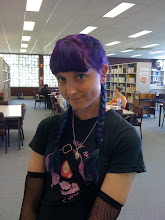Fist a note: I use the phrase Safe Signals instead of Safe Words very deliberately. Not everyone can speak, and not all Safe Signals are verbal.
Safe Signals are another of those things that I believe every sexually active person should have, not just those in the kinky community. A Safe Signal is a signal, decided on before hand by all partners, that lets the other parties know to stop. Often people will have two (or more) different signals, declaring the urgency of the halt. One could mean slow down, or stop that activity, another could mean Stop Everything Now!
A Safe Signal could be just about anything;
- A word not likely to be used in normal play, such as Pineapple
- A hand gesture or movement not likely to be used in normal play, like opening and shutting the hands quickly
- A sound made, such as snapping fingers or ringing a bell
But why are Safe Signals so important?
In kinky communities, the answer is obvious. A partner hit a little too hard, cut a little too deep, you need to be able to let them know so they can stop and apply first aid if necessary.
But what about people who aren't kinky?
Safe Signals, I believe, should be supported and pushed for by feminists all over. They are the epitome of enthusiastic consent. They help partners know that, although someone may have consented initially, that consent can be revoked at any time. And it gives people a means to revoke that consent! If I'm in the middle of sex and suddenly have a flashback, I have a way of quickly letting my partner know that we Must Stop.
But Safe Signals are not without their limitations. It is possible thar, should you freeze up or need to stop, you might be unable to make your Signal. This is why it is vitally important that we tune in to our partners, so that if something changes, if something goes wrong, we can respond immediately.






1 comment:
When discussing safe signals (I like that term, though I didn't use it before), you often get comments like, ”I trust my dominant partner" or something to the effect.
You know what? I pride myself on being a fairly empathic guy, and yet I am perfectly capable of missing something. Everybody is. And a safe signal is just one more level of risk-management.
You want to do it without a safe signal? Okay, but don't kid yourself you won't need one. Accept that if you need one, you won't have it.
Also, I like having three codes (for stop!, caution! and go!) so that I can reassure myself I haven#t gone too far. Nothing like hearing "green" when doing a color check and knowing there's still ways to go.
Post a Comment